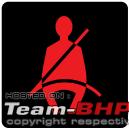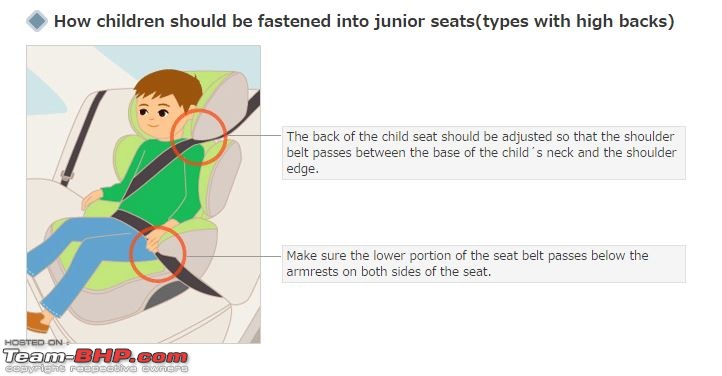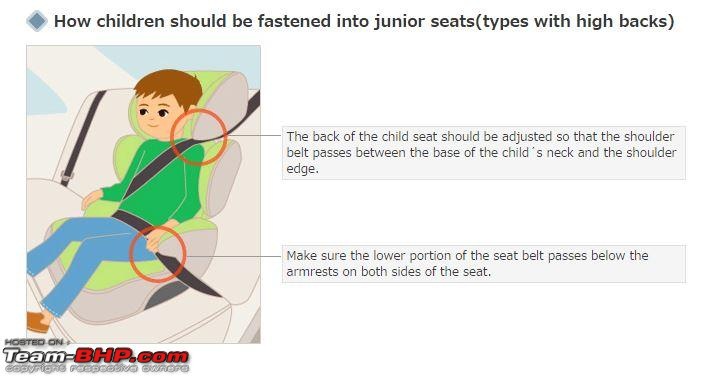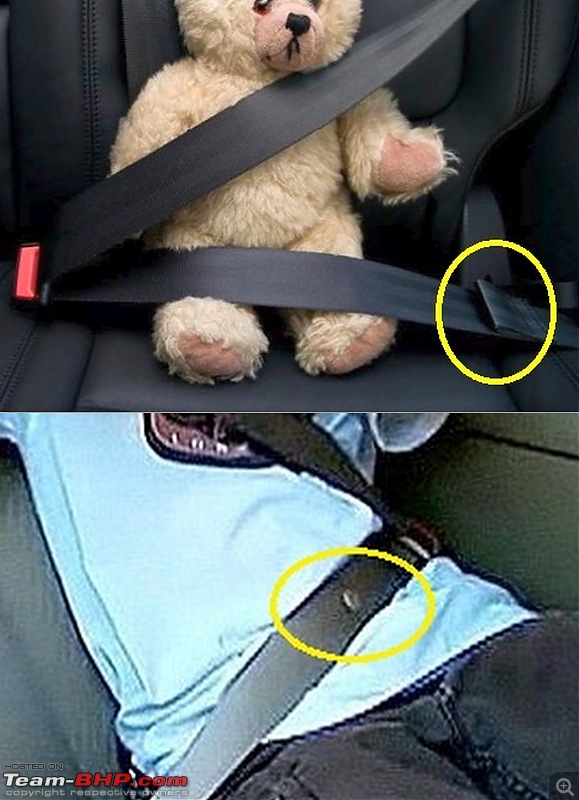There are already two edifying threads about seat-belts on how they work and why you should wear them.
How they work? Why you should buckle up?
Article Source:
www.takata.com How seat belts prevent injury?
Seat-belts and child restraints are secondary safety devices and are primarily designed to prevent or minimize injury to a vehicle occupant when a crash has occurred. Seat-belts and child restraints thus:
- Reduce the risk of contact with the interior of the vehicle or reduce the severity of injuries if this occurs;
- Distribute the forces of a crash over the strongest parts of the human body;
- Prevent the occupant from being ejected from the vehicle in an impact;
- Prevent injury to other occupants (for example in a frontal crash, unbelted rear-seated passengers can be catapulted forward and hit other occupants).
- A belted occupant will be kept in their seat and thus will reduce speed at the same rate as the car, so that the mechanical energy to which the body is exposed will be greatly reduced.
Ask me now and I'd say wearing them properly is equally essential!
Yes, If your seat belt is not properly fastened, it will not be effective. In fact, it can be dangerous not to have your seat belt fastened correctly as that might result in seat belt injuries such as sternal, rib fractures and abdominal submarining injury.
Submarining: Sliding of the lap belt above iliac spine due to either bad safety belt geometry or poor coupling of the occupant to the car. This mechanism results in severe abdominal injuries (laceration/perforation of abdominal viscera).
So, lets see how it should be done then.
1. First, sit with your hips and back firmly positioned against the back of the seat. Also, have your seat in an upright position, as much as possible.
Quote:
Key Point!
If you are not sitting firmly in your seat with your hips and back against the seat back, or if the seat is in an overly reclined position you may experience the "submarine effect". This occurs when, during an accident, the body slips below the portion of the belt designed to restrain your hips and back. This may result in serious injuries.
|
2. Grasp and pull the tongue portion and, after confirming the webbing is not twisted, insert it into the buckle portion until you hear or feel the “click."
3. Pull the portion of webbing from the buckle to your shoulder lightly away from your body, and then release it. This will eliminate any slack in the belt.
Quote:
Key Point!
If there is slack in the seat belt between your body and the webbing, there is some potential you may move significantly in the event of a collision. Even though you had your seat belt fastened, your body may still impact other objects in the vehicle, possibly resulting in serious injuries.
|
4. Please check to see whether you have adjusted your seat belt so that the portion designed to restrain your hips and back is low around your waist and is as tight as possible. Also, confirm the portion of the belt crossing over your shoulder passes between the base of your neck and the edge of your shoulder. If not, change the positioning of your seat or use the seat belt height adjuster to correct.
5. The position of the headrest is also important. As a rule of thumb, adjust the height of the headrest so that your temples, which approximates center of gravity of your head, are positioned in the center of the headrest. (Note: In some vehicles, the position of the headrest may not be adjustable)
6. Finally, it is best if the driver can operate the vehicle with no space between the shoulders and the seat. If the driver’s shoulders are not touching the seat, the occupant should either move the seat forward or adjust the seat back to a more upright position.
Finally, take a look at this 5-step quick buckle test before you start rolling.
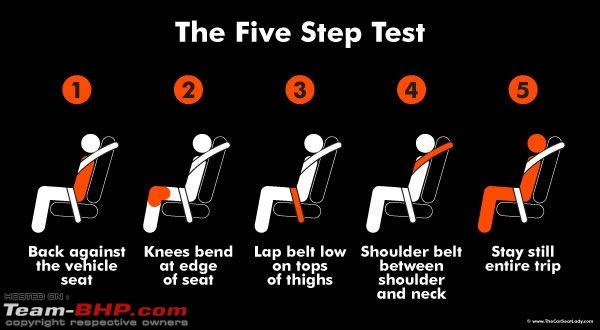
Buckle up and drive safe lads!
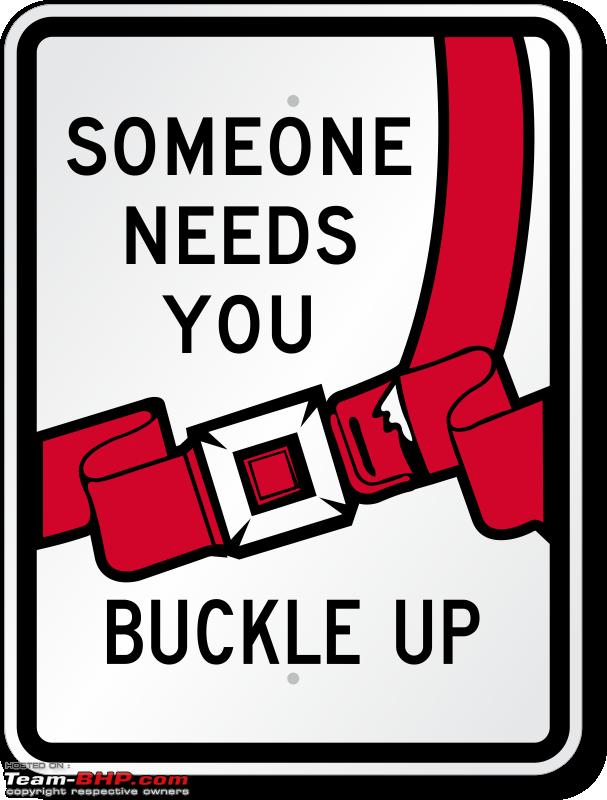
Images: Google and WikiHow
 (34)
Thanks
(34)
Thanks
 (1)
Thanks
(1)
Thanks
 (1)
Thanks
(1)
Thanks

 (21)
Thanks
(21)
Thanks

 (6)
Thanks
(6)
Thanks
 (4)
Thanks
(4)
Thanks
 (3)
Thanks
(3)
Thanks
 (2)
Thanks
(2)
Thanks
 (1)
Thanks
(1)
Thanks

 (2)
Thanks
(2)
Thanks




